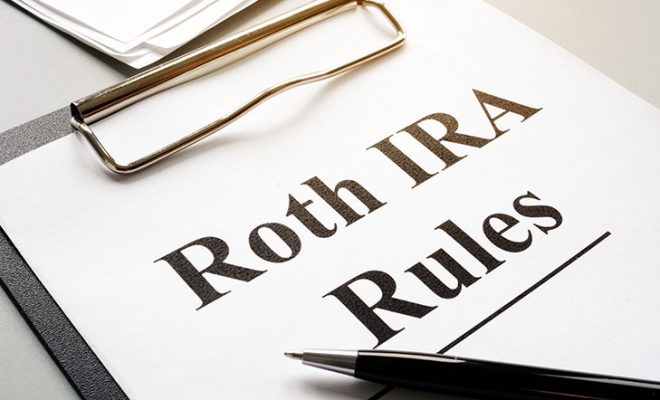How to Use the Total Return Strategy Effectively for Your Retirement

Life’s uncertainties can arise anytime in retirement, from an unexpected health issue, a sudden home repair, or an urgent debt situation. This is why being financially ready is essential to enjoying a secure retirement. Many retirees rely heavily on interest and dividend income to cover their expenses. While this can provide a steady stream of cash, it may not always be enough to meet all your financial needs. A more comprehensive approach, known as the total return strategy, can offer better financial security. The total return strategy involves a diversified approach that considers the overall returns from your investments, including not just dividends and interest but also capital gains from selling assets. This approach allows you to tap into all potential sources of income and manage your lifestyle needs more effectively.
A financial advisor can guide you in implementing the total return strategy. This article will also explore how the total return strategy works and how you can use it to maximize your retirement income.
What is the total return strategy?
When planning for retirement, you may feel the need to create a steady stream of income that mirrors your pre-retirement earnings. This approach can help you maintain your current standard of living after you stop working and allow you to meet your financial needs and avoid significant lifestyle changes after retirement. Such a mindset is definitely essential, but it does not fully address all your retirement financial needs. You need to go beyond just generating enough interest and dividend income and think more comprehensively about your financial strategy.
A more effective approach to ensure a financially secure retirement is to build a portfolio that not only provides a steady income but also offers capital appreciation and liquidity. This way, you will have multiple sources of funds to draw from and can ensure financial flexibility throughout your retirement years. This is where the total return strategy comes in. The total return strategy involves focusing on your entire portfolio’s performance, not just the income it generates. Instead of relying solely on dividends and interest, you consider the overall returns, which can include capital appreciation. The increase in the value of your investments generates profits, which allow you to beat inflation and increase your net worth.
The idea behind using the total return investment strategy is to take advantage of both income and growth opportunities within your portfolio to meet your financial needs. For example, consider a scenario where you have invested in a portfolio of stocks and bonds. Now, you could either live off the interest you earn from your bonds and dividends from your stocks or sell off some of your stock holdings that have risen in value to earn a capital gain. When you sell assets that have appreciated in price, you get to tap into the growth potential of your investments. This offers you better financial flexibility and control rather than being dependent on your income-producing assets. If you solely rely on your dividend income, you limit yourself. Say the bond yield from your investment declines. In such a case, you would struggle to make ends meet as you would have fewer alternatives in retirement to make up for the loss. You may even be forced to go back to work to earn money. However, if you followed a total return strategy, you would have more options. You would be able to sell a portion of your stocks when bond yields lower. This way, you can generate money when you need it and not be overly reliant on any one source of income.
Does total return include dividends? Well, yes, it does. The strategy does not only focus on generating capital gains but also on following a more balanced approach that focuses on both income and growth. In fact, the total return investment strategy involves reinvesting interest or dividend income in growth assets like stocks. If you have surplus dividends and interest and do not need this money immediately, you can invest it in stocks for future use.
Below are three main components of the total return strategy when used for retirement:
1. Asset allocation
Asset allocation refers to allocating your investment capital across different asset classes. There are primarily three asset classes – equity, debt, and cash. However, there are several broader asset classes apart from these three, such as real estate, commodities, etc. Each asset class has unique characteristics that can play a role in your portfolio, depending on your specific needs and objectives. Asset allocation involves strategically dividing your investment capital across these classes to balance out risk and return. For example, equities (stocks) may carry high risk but also the potential for higher returns, whereas debt (bonds) carry lower risk and promise lower returns. Cash provides liquidity but offers minimal to no returns and is mostly used as a safe haven for your emergency funds. Real estate can offer both rental income and capital appreciation through sale. You need to determine your risk appetite and financial goals to select suitable investment options for your needs.
When implementing a total return investment strategy, you need to allocate your funds to different asset classes to ensure you get a mix of income and growth. For example, while you can invest in bonds to provide a steady stream of interest income, stocks may offer the potential for capital appreciation. Commodities, like gold and others, can act as a hedge against inflation and stock market volatility. These can be chosen based on your retirement goals, risk tolerance, and time horizon. If you are early in retirement or have a higher tolerance for risk, you might be more inclined toward stocks for higher growth potential. However, this can also add higher volatility to your portfolio, so it is essential to be prepared for potential fluctuations. Conversely, if preserving your wealth is a priority, you might favor bonds or other safer investments. The key is balancing your need for growth with the risk of market downturns.
SPONSORED WISERADVISOR
2. Diversification
Diversification is the backbone of every investment portfolio. It involves spreading your investment capital across various asset classes, sectors and industries, market capitalizations, and geographical regions to lower the impact of any one investment’s underperformance on your overall portfolio. So, if some of your stocks do not do well, others can make up.
Diversification is different from asset allocation. While the latter only focuses on different asset classes, the former focuses on making the portfolio diverse even within the same asset class. This means if you are investing in bonds, you can diversify within municipal, corporate, and government bonds. Likewise, if you are investing in stocks, you can invest in small, mid, and large-cap stocks or consider investing in stocks from different industries like technology, tourism, artificial intelligence, and more together. This keeps your returns stable and reduces risk. Different investments react to market forces differently, stabilizing your overall portfolio.
In the context of the total return strategy, diversification allows you to expand both your income and growth options. It will enable you to lower the risk of significant losses that could hurt your retirement and, at the same time, enhance your returns. For instance, if tourism stocks are down and you need immediate financial support, you can sell energy stocks, which may be priced high at the time. Similarly, corporate bonds may offer a higher yield if you have experienced low bond yields from government bonds. This flexibility and abundance of options can be crucial for retirees who need to withdraw from their portfolios regularly.
3. Asset location
Asset location is about where your money is invested. In the context of asset location, there are two types of investments – those that offer tax advantages and those that do not. Tax diversification is as important for your investments as other types of diversification, and asset location helps you focus on this critical factor. With asset location, you can place your investments in different types of accounts that minimize taxes and distribute the burden of taxes between the present and the future.
The taxability of your investment can differ. For example, if you invest in bonds, the interest income from municipal bonds is generally tax-free when it comes to federal income taxes. If you purchase municipal bonds issued by the state where you file state taxes, the interest earned is often exempt from state taxes as well. On the other hand, the interest you earn on corporate bonds is typically subject to taxes. Further, interest earned from savings bonds is exempt from state and local income taxes. However, federal taxes are due only in the year when the bond matures, is redeemed, or reaches 30 years, at which point it stops earning interest. Asset location helps you select instruments based on how they are taxed and how tax-efficient they are. It also helps you decide when you will be taxed. For example, in the case of traditional and Roth retirement accounts like the 401(k) and Individual Retirement Account (IRA), you can decide whether you pay taxes pre-retirement while contributing or in retirement when you withdraw the funds. Traditional accounts are taxed on the withdrawals in retirement, while Roth ones are tax-exempt in retirement.
A total return strategy allows you to minimize your taxes in retirement by selecting the most tax efficient option that leaves more of your returns intact for your future needs. It helps you maximize your after-tax returns ensuring the longevity of your savings.
Below are the steps to implement the total return investing strategy using the three strategies mentioned above:
Step 1: Start with asset allocation
You can start by incorporating asset allocation as per your goals and risk appetite. Decide how much of your portfolio to allocate to different asset classes—equities, bonds, real estate, etc. For example, if you have a high-risk appetite and are comfortable adopting an aggressive investment strategy, you can concentrate more on stocks. However, you can focus more on bonds if you prefer lower risk.
Step 2: Diversify within the asset classes
The next step is to combine diversification with asset allocation. It is important to focus on risk reduction by adding different types of investments to your portfolio. You can do this by first dividing your investments across different asset classes and then spreading your investments within those classes to reduce risk through diversification. This means if you are investing in equities, you can include stocks across different sectors, market caps, and geographies. In the case of bonds, you might choose a mix of municipal, government, and corporate bonds to protect yourself from the volatility of individual investments.
Step 3: Concentrate on asset location
Finally, you can place each asset in the most tax-efficient accounts to minimize taxes. For example, you can invest in stocks through tax-advantaged accounts like the IRA or a 401(k) for tax diversification. At the same time, you can also place income-generating assets like bonds in these tax-advantaged accounts.
To conclude
A total return strategy can be the ideal approach to ensure a secure financial future. With a focus on income and growth, the strategy takes care of all potential financial needs and helps you adopt a flexible approach to wealth creation. It ensures you have financial liquidity when you need it the most and that you do not compromise your financial well-being post-retirement. It is also simple to incorporate. All you need is a diversified portfolio with a balanced allocation of different types of assets. Make sure to consult with a financial advisor to devise the best approach suited to your individual needs.
Use the free advisor match tool to get matched with experienced financial advisors who can help guide you on how to maximize your retirement income. Answer a few simple questions and get matched with 2 to 3 vetted financial advisors based on your requirements.
For further information on creating a suitable retirement plan for your unique financial requirements, visit Dash Investments or email me directly at dash@dashinvestments.com.
About Dash Investments
Dash Investments is privately owned by Jonathan Dash and is an independent investment advisory firm, managing private client accounts for individuals and families across America. As a Registered Investment Advisor (RIA) firm with the SEC, they are fiduciaries who put clients’ interests ahead of everything else.
Dash Investments offers a full range of investment advisory and financial services, which are tailored to each client’s unique needs providing institutional-caliber money management services that are based upon a solid, proven research approach. Additionally, each client receives comprehensive financial planning to ensure they are moving toward their financial goals.
CEO & Chief Investment Officer Jonathan Dash has been covered in major business publications such as Barron’s, The Wall Street Journal, and The New York Times as a leader in the investment industry with a track record of creating value for his firm’s clients.











